Motivate a dog (even a skittish dog) – Modular Reward Events!
Positive reinforcement simply means that we are adding desirable stimuli to increase behaviors. Typically we call those rewards. However, despite the presence of rewards, many dogs tune out, don’t listen, and usually give a lukewarm performance. This post will show you how to reset your reward approach so you get supercharged motivation!
RECONCEPTUALIZE POSITIVE REINFORCEMENT
I have talked several times on this channel about ways to reconceptualize “positive reinforcement” to try and give you more bang for your buck. I addressed this idea before when I talked about the Training Trifecta. I tried to emphasize that rewards were more than just the things we give dogs. Here I talked about the importance of praise and touch, especially from a dog’s owner.
I attempted to increase your variability of the types of food rewards used when discussing reward scaling.
I’ve also discussed marker training which is a system of precision communication. When used correctly and consistently, markers can become somewhat rewarding all by themselves. This happens because a marker reliably predicts access to rewards.
But one of the problems I see is that those rewards on the backend are—generally—relatively weak. This ultimately leads to diluted motivation and tuning out over time. This is also common when we start trying to phase out food or get around distractions.
But I suggest we can energize the process and bring pet owners—you guys—into a broader and more effective understanding of positive reinforcement and rewards. Let me start with a little allegory.
WE’LL ALWAYS HAVE PARIS
When my wife and I married, we honeymooned in Paris for almost two weeks. And it was amazing. Paris a just a magical place. I got this shirt at the Moulin Rouge, and I got this scarf at the famous Paris flea market, and I’ve worn it every winter since.
But when I think about Paris, I don’t think about these…I think about this stuff—the things I did there. The food, the smells, the places, the people, and the things I saw and did. If I lost these things in a fire…that would suck, but I still have the most important things in my head. And when I think about Paris, or traveling in general because I’ve been to lots of places, I have a positive emotional response. I’m more likely to return to those places or even try new ones because of my positive experiences.
So what the hell does this have to do with dog training?
EXPERIENCES ARE BETTER THAN THINGS
When we reward our dogs, we need to think about creating experiences rather than just giving them things. I ask my students during classes, “Did you reward your dog?” and they’ll say, “Well, sure: I gave ’em a treat.” But that’s a THING. So then they’ll follow up with, “Well, I praised them too.” Ok. that’s better. That’s a good start. But I’ve watched thousands of people train their dogs; by and large, even these praise rewards are weak.
In most cases, the other problem with rewards is that they become predictable. Humans tend to create ruts for themselves by developing little routines. The routines then become cut-and-paste little programs that are initiated by some action. So, your dog does what you want, and you initiate your little treat+praise routine. But it’s the same every time.
So, for example, let’s say you practiced three behaviors in a row: “Sit. Good dog.” (treat). “Sit. Good dog.” (treat). “Sit. Good dog!” (treat). Each of those “rewards” was pretty much the same routine each time. Over time your dog will have this routine memorized and will start deciding whether or not the things they do are worth it.
Post-reinforcement pause
There’s also a phenomenon in effect here called post-reinforcement pause. Basically, that describes a short break that occurs after reinforcement. In dogs, you’ll see this as little pockets of inattention. They’ll tune out after accessing a reward. You say, “good dog,” hand them a treat, and then they disengage from you to see what else is happening in the environment. Then, when you want to do the next thing, you have to call them BACK into attention. You’re not getting sustained engagement from them, and training takes longer.
You see this much less in very well-trained dogs because they’re in a different mindset, but it’s very common in pet dogs because most pet dogs, let’s be honest, are not that well-trained. Eventually, you get that whole thing where your short, predictable rewards may not even be enough to hold attention at all, and then you call a trainer and tell them, “my dog doesn’t listen.”
OK, so how do we short-circuit Post-Reinforcement Pause? How do we create great Reward Events that increase your dog’s motivation and drive to learn? Here’s how…
MOVEMENT
Dogs are active beings, and movement is motivating to them. One of my personal gripes about most pet dog training methods is that they’re very passive; there’s a lot of handing food to dogs, and there’s a lot of standing around staring at each other. I prefer to have dogs MOVE.
One of the ways I do that is to have the dogs chase their rewards. I do this whether I have food, toys, or just praise and petting. Dogs are always moving INTO reward. It’s a SPACE that they enter.
This is also the type of brain hacking for a shy or nervous dog. You will build their confidence if you work to cultivate movement into a reward space. Movement is an integral part of Polyvagal Theory, which is a psychological concept that emphasizes the connection between physical movement and emotional regulation. According to Polyvagal Theory, certain movements can activate certain brain areas responsible for regulating emotions. Movement can also help to reduce stress levels and create a sense of safety by creating the feeling of being grounded and in control.
So, it’s spooky when things come toward a nervous dog. When a nervous or anxious dog chooses to move toward something, that’s empowering to them. That’s why you sit down and let a skittish dog approach you rather than the other way around.
And, of course, for confident dogs, this movement will still increase their drive and motivation because it’s exhilarating to them.
ENERGY
You should be genuine in your praise and enthusiastic when you do things together. You want to be as authentic as possible. Try your best to have an infectious energy. Don’t wait when your dog pauses; take off and let them catch up; GO GO GO. Set the pace for the energy you want.
UNPREDICTABILITY
Vary the length of the event; as I mentioned earlier, a predictable length starts to feel routine. As you’ll see, unpredictability is a huge factor in getting better buy-in. It’s the reason slot machines keep you hooked. Sometimes a reward-event will be 2 seconds. Sometimes it’ll be ten. It might even go on for 20 or 30 seconds. Who knows? Make the duration of the event fluid.
Also, remember that multiple tangible rewards can be one event. For example, dogs don’t have a sense of portion with food rewards. If I take three treats in my hand and feed them to my dog, that’s just one large treat. Whether I use three, or five, or just half of one, it’s all the same for my dog. However, if you treat sequentially, now you’ve extended the reward event, and that slot machine is paying out better. To a dog, that’s way more interesting.
Again, varying the number used in each reward event will keep it unpredictable and allow you to scale up the reward event to reward better effort or to anchor in a milestone, such as doing a difficult behavior for the first time.
CONTRAST (VARIANT ENERGY)
Dogs are also motivated by a variance in energy levels. Sudden bursts are super stimulating. We ask for something, they do it, and we end that moment with an explosion of motion and energy. This really turns a dog on. I can’t even count the number of dogs I’ve worked with where we do this, and you can see that dog light up, like, “Oh my God, that’s amazing!”
In regards to our marker training, the terminal marker is the thing that initiates a reward-event. For me, I use “Yes.” Clicker trainers, for example, would use their click. Still, the important thing is that there is a difference between the energy of being in behavior versus ending the behavior and moving into reward. The reward event is worth working towards. The marker becomes a reinforcer because it reliably predicts that reward-event.
PRESENTATION
Presentation of your tangible rewards—namely food and/or toys—is very important. Try not to drop food, or dogs will check out to search the floor. Your dog will also be driving into your hand, so they need to be able to bump into a flat hand. We talked about food handling in another post.
You’ve also got to make clear presentations with your toys. Since your dog will be moving with energy, they need to have a clear surface to grab onto. If they get YOU, it’s probably your fault. Very few people put much thought into how they hold food or present toys, but it does matter. It affects your practice overall.
TOUCH
As I discussed in both the Touch Tactics AND the Training Trifecta posts, strategic petting can flood a dog’s brain with even more feel-good chemicals (primarily dopamine). The goal is to light the brain up like a Christmas tree.
CUSTOMIZATION
Finally, customizing reward events to fit your dog and YOU is definitely something you need to think about. The intensity of your work has to fit your dog’s breed, temperament, and individual tastes, and it needs to fit what you can do physically. Some dogs will move and target and engage with you like you’re the last two living things on earth. Some dogs, especially dogs that are shy, nervous, or have low frustration tolerance, will balk at some of this stuff.
Remember what I’ve told you in other videos: it’s not what it is; it’s what you’ve trained it to be.
Some dogs will sprint as you move; others will only follow you a few inches. Some dogs will like quick, active movement, and some will prefer to go slower. Obviously, a German Shepherd will move differently than a Mastiff, and a Jack Russell will move differently than a Great Dane.
I have used these methods with countless skittish dogs to help build their confidence in training. Once they start having fun, we can increase the intensity of the reward events, and then their training moves much faster. Through their active training, they learn to build confidence overall, especially as we start moving reward-events outside into more potentially spooky situations.
Likewise, not all of you will physically be able to do it as I do. I know I’m high-drive. I know my training energy is a cartoon on cocaine. And so I get that not everyone will be able to step back quickly or hop around.
THINK: MODULAR
The main thing with Reward Events is to see how MODULAR it is and learn to switch and swap things around on the fly. Then you customize each component to fit your dog and your training style.
You don’t even have to have every component in every reward event. This is just an inventory of possible reward structures. Sometimes you’ll have just one or two, and sometimes the whole kit and kaboodle. Remember, though, that unpredictability creates novelty, and that creates buy-in. The other thing I love about structuring my training in reward events is that it takes the emphasis off of the food. Food is a GREAT training tool, but you shouldn’t put all of your eggs in the basket. If you’re relying on food to do your training, that’s like throwing a hammer at a pile of wood and hoping it builds a house.
Good reward-events mean that food is just one modular component of reward. When you start phasing food out as you progress—and you should—you have a larger system of reward that you’ve already cultivated buy-in for that’s not dependent on the food. You will have conditioned your dog to feel positive reinforcement simply because a reward-event occurs, whether it’s two seconds or 20, and whether you have treats or not. It takes time and investment in the process to do this. You have to get your dog to want more of what you have, and I ain’t talkin’ about treats. This is the gateway to a well-trained dog and even a great off-leash dog.
NOW GO PRACTICE!
OK, guys, there’s a lot to process from this post. Bottom line, think modular:
- energy
- time
- movement
- presentation
- customization.
Build your dog’s buy-in and show them how it works; you will see great changes in their attitude and your bond.
Now questions for you! What are some other ways we can kick up motivation in our dogs? What snags do you have as you try to do this stuff? And what are some other problems you’re having as you practice? Let’s connect in those comments.
As always, keep learning, keep practicing, and we’ll see you next time. Thanks for reading!


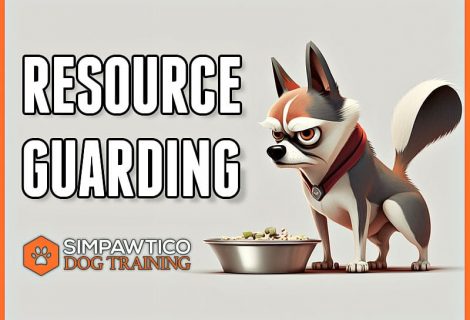
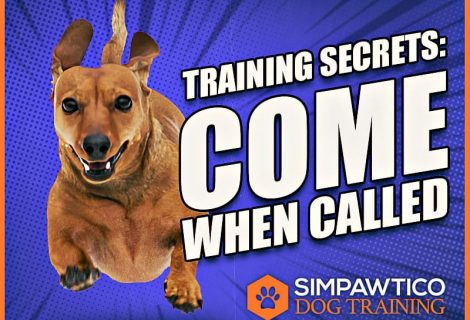
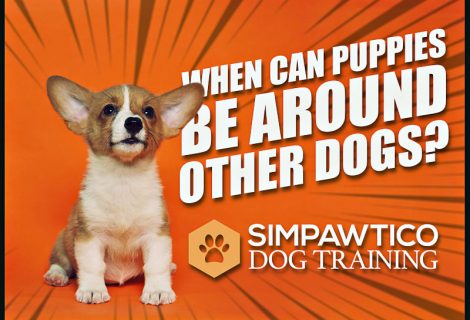

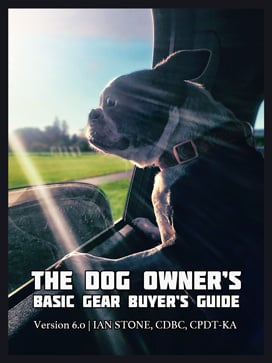


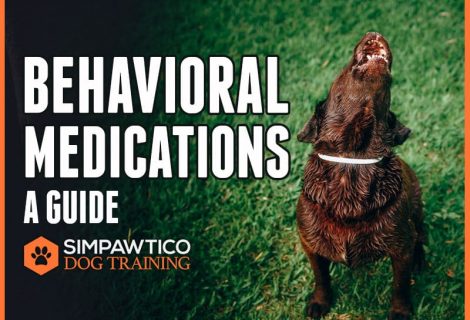
Trackbacks for this post